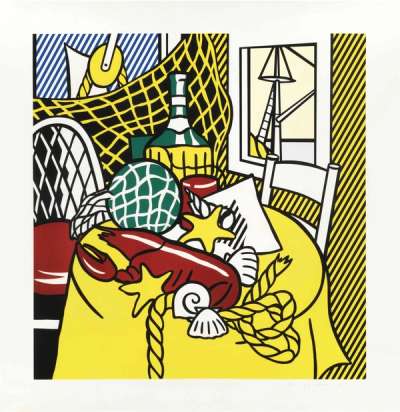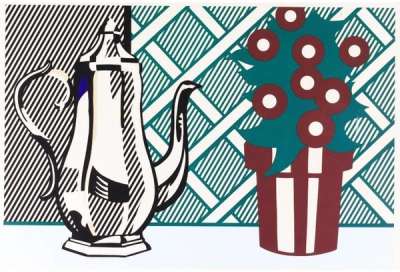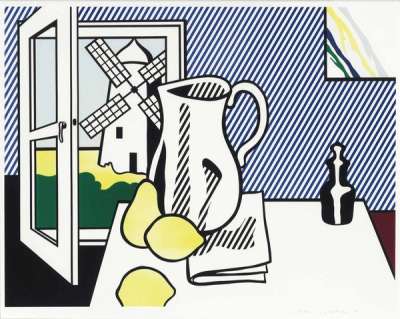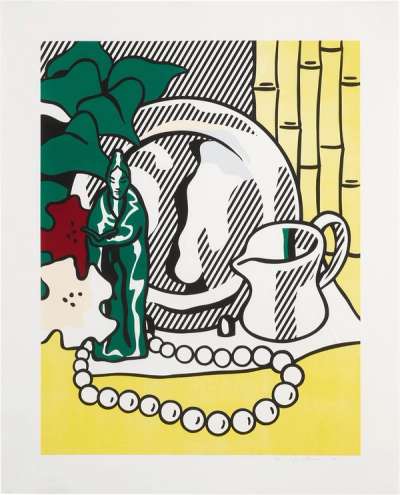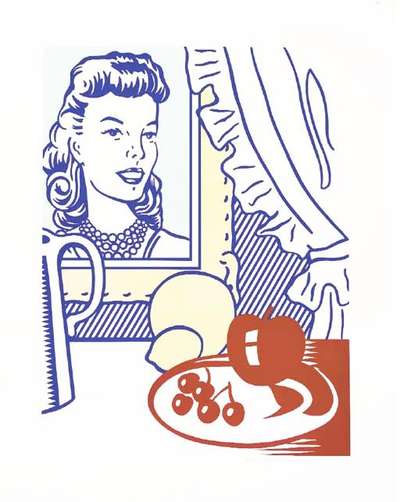
Yellow Still Life

Yellow Still Life
Signed Print
Roy Lichtenstein
£6,500-£9,500
$12,500-$18,000 Value Indicator
$11,000-$16,000 Value Indicator
¥60,000-¥90,000 Value Indicator
€7,500-€11,000 Value Indicator
$60,000-$90,000 Value Indicator
¥1,230,000-¥1,800,000 Value Indicator
$8,500-$12,000 Value Indicator
AAGR (5 years) This estimate blends recent public auction records with our own private sale data and network demand.
There aren't enough data points on this work for a comprehensive result. Please speak to a specialist by making an enquiry.
Medium: Planographic print
Edition size: 100
Year: 1974
Size: H 64cm x W 94cm
Signed: Yes
Format: Signed Print
MyPortfolio
Your collection tracked in real time.
Build your portfolio, manage valuations, view return against your collection and watch works you're looking for.
Track auction value trend
Auction Results
| Auction Date | Auction House | Artwork | Hammer Price | Return to Seller | Buyer Paid |
|---|---|---|---|---|---|
| March 2017 | Christie's New York - United States | Yellow Still Life - Signed Print | |||
| April 2016 | Christie's New York - United States | Yellow Still Life - Signed Print | |||
| May 2014 | Sotheby's New York - United States | Yellow Still Life - Signed Print | |||
| April 2012 | Christie's New York - United States | Yellow Still Life - Signed Print | |||
| November 2011 | Freeman's Online - United States | Yellow Still Life - Signed Print | |||
| April 2011 | Sotheby's New York - United States | Yellow Still Life - Signed Print | |||
| October 2008 | Christie's New York - United States | Yellow Still Life - Signed Print |
Meaning & Analysis
Roy Lichtenstein’s Six Still Lifes of 1974 manifest a colourful excursion into the diverse legacies of the still life genre. Each composition in this bright six part sequence is predicated on the artistic style of 20th century modern masters.
Although still life painting has been practiced since ancient times, its particular mode of representation has never ranked highest in the hierarchy of art. Offering sublime scenes of prosperity and temporality, the genre was often dismissed as a creative exercise. Lichtenstein embraces its decorative qualities, rendering his Six Still Lifes according to a pronounced commercial aesthetic.
Historically, still lifes would capture the vanity of earthly pleasures through allegorical depictions of inanimate objects. Lichtenstein’s Yellow Still Lifedoes just that, showcasing a perishable assortment of goods, set against a neutral, cream coloured background. The print depicts apples, oranges, bananas, lemons and a block of cheese, piled together in the centre of the composition.
Although Lichtenstein mimics the subject matter and the conventional layout of classical still lifes, he renders his shapes purist, uniform and bright yellow. The artist re-envisions an elaborate historic image as a simplified graphic. In doing so, he presents a humorous artwork reminiscent of a modern day supermarket advert.
